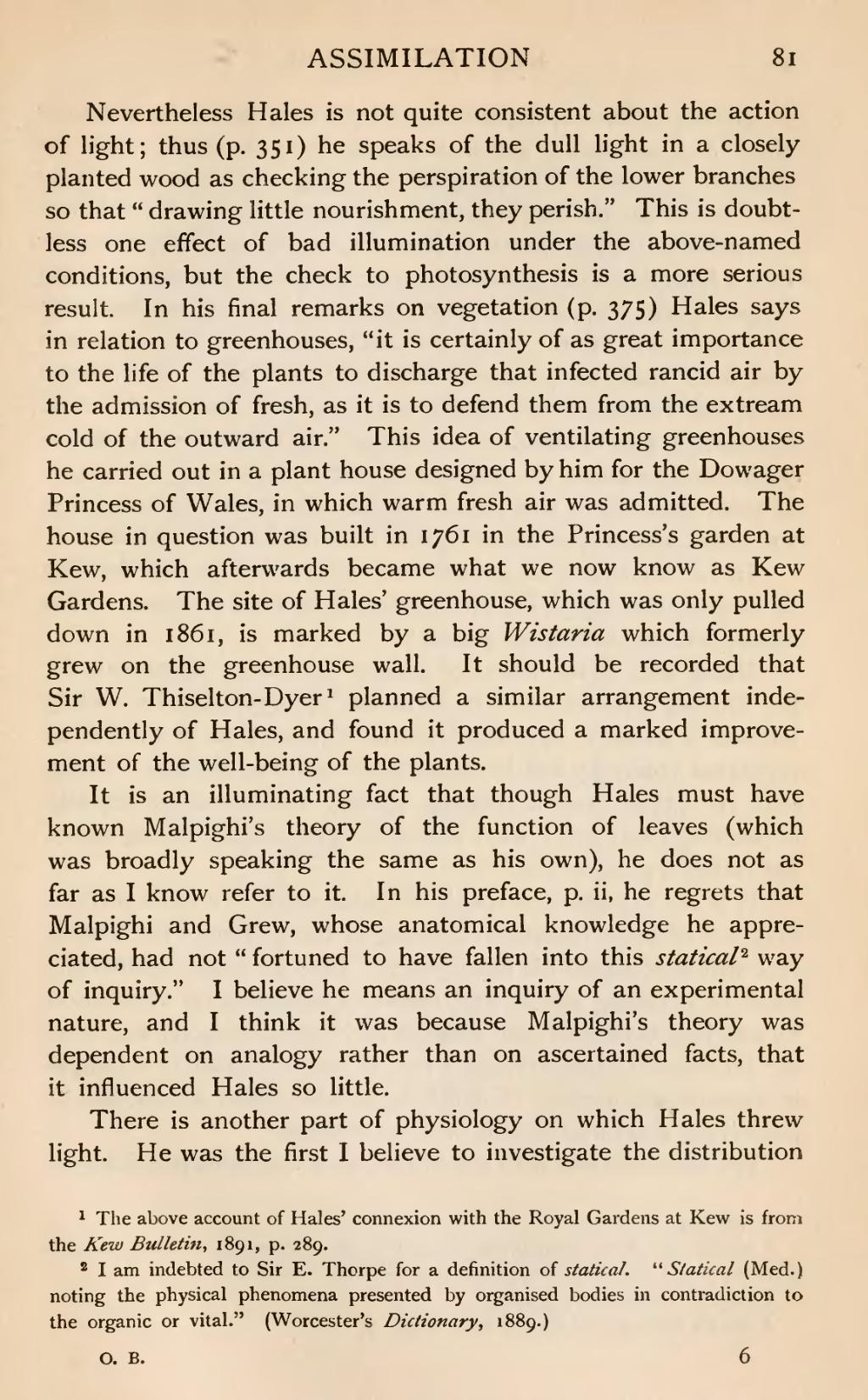Nevertheless Hales is not quite consistent about the action of light; thus (p. 351) he speaks of the dull light in a closely planted wood as checking the perspiration of the lower branches so that "drawing little nourishment, they perish." This is doubtless one effect of bad illumination under the above-named conditions, but the check to photosynthesis is a more serious result. In his final remarks on vegetation (p. 375) Hales says in relation to greenhouses, "it is certainly of as great importance to the life of the plants to discharge that infected rancid air by the admission of fresh, as it is to defend them from the extream cold of the outward air." This idea of ventilating greenhouses he carried out in a plant house designed by him for the Dowager Princess of Wales, in which warm fresh air was admitted. The house in question was built in 1761 in the Princess's garden at Kew, which afterwards became what we now know as Kew Gardens. The site of Hales' greenhouse, which was only pulled down in 1861, is marked by a big Wistaria which formerly grew on the greenhouse wall. It should be recorded that Sir W. Thiselton-Dyer[1] planned a similar arrangement independently of Hales, and found it produced a marked improvement of the well-being of the plants.
It is an illuminating fact that though Hales must have known Malpighi's theory of the function of leaves (which was broadly speaking the same as his own), he does not as far as I know refer to it. In his preface, p. ii, he regrets that Malpighi and Grew, whose anatomical knowledge he appreciated, had not "fortuned to have fallen into this statical[2] way of inquiry." I believe he means an inquiry of an experimental nature, and I think it was because Malpighi's theory was dependent on analogy rather than on ascertained facts, that it influenced Hales so little.
There is another part of physiology on which Hales threw light. He was the first I believe to investigate the distribution
- ↑ The above account of Hales' connexion with the Royal Gardens at Kew is from the Kew Bulletin, 1891, p. 289.
- ↑ I am indebted to Sir E. Thorpe for a definition of statical. "Statical (Med.) noting the physical phenomena presented by organised bodies in contradiction to the organic or vital." (Worcester's Dictionary, 1889.)
